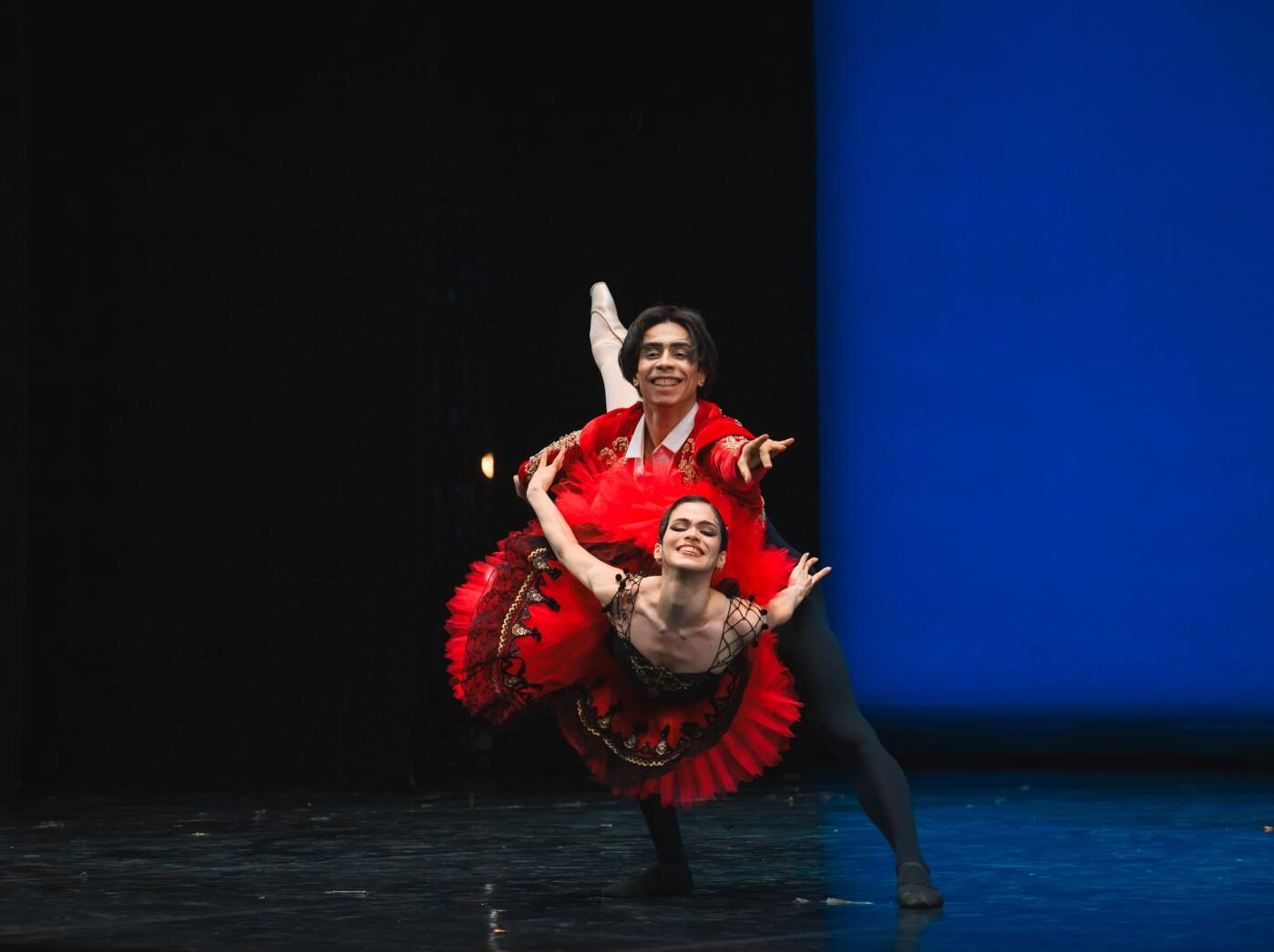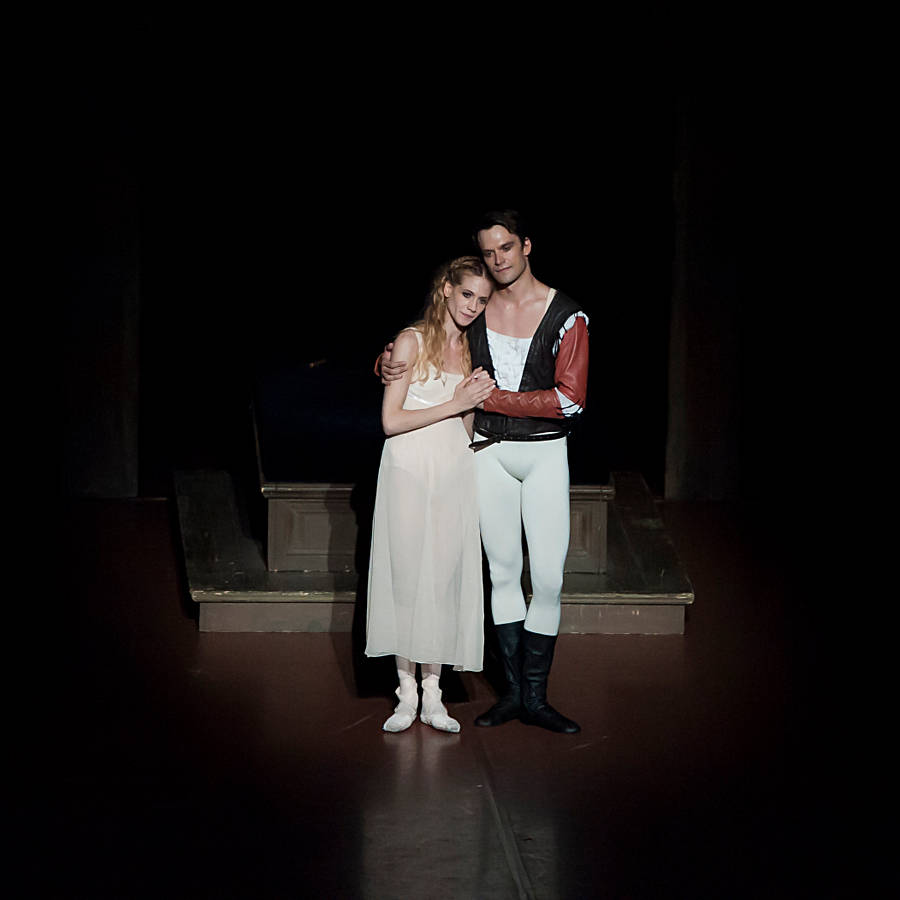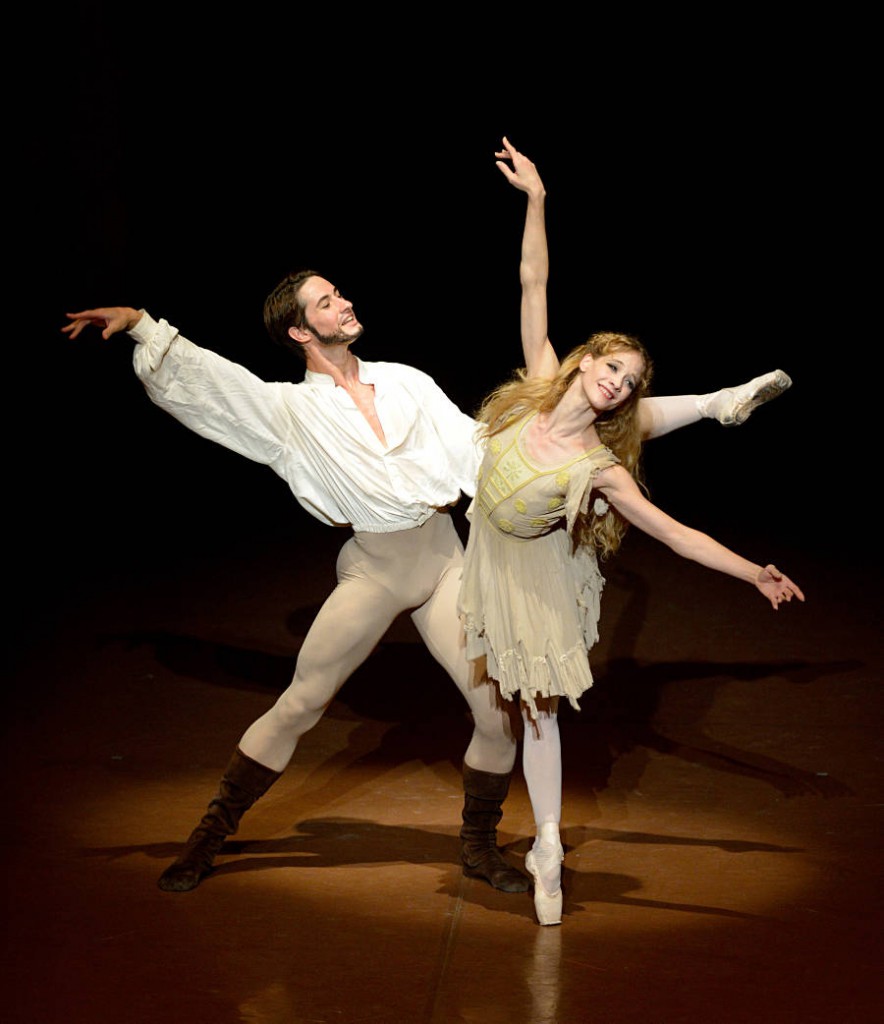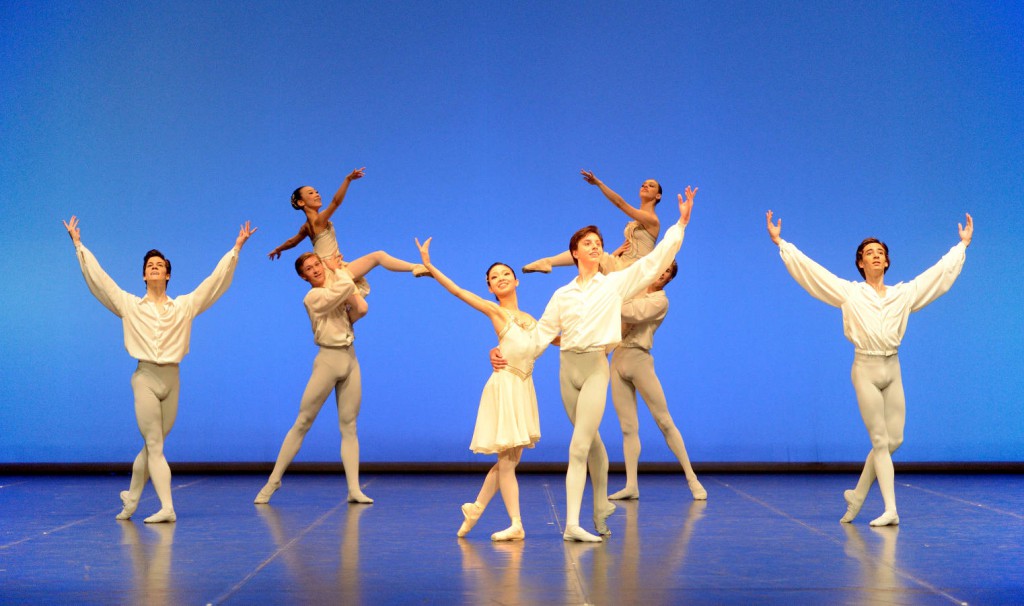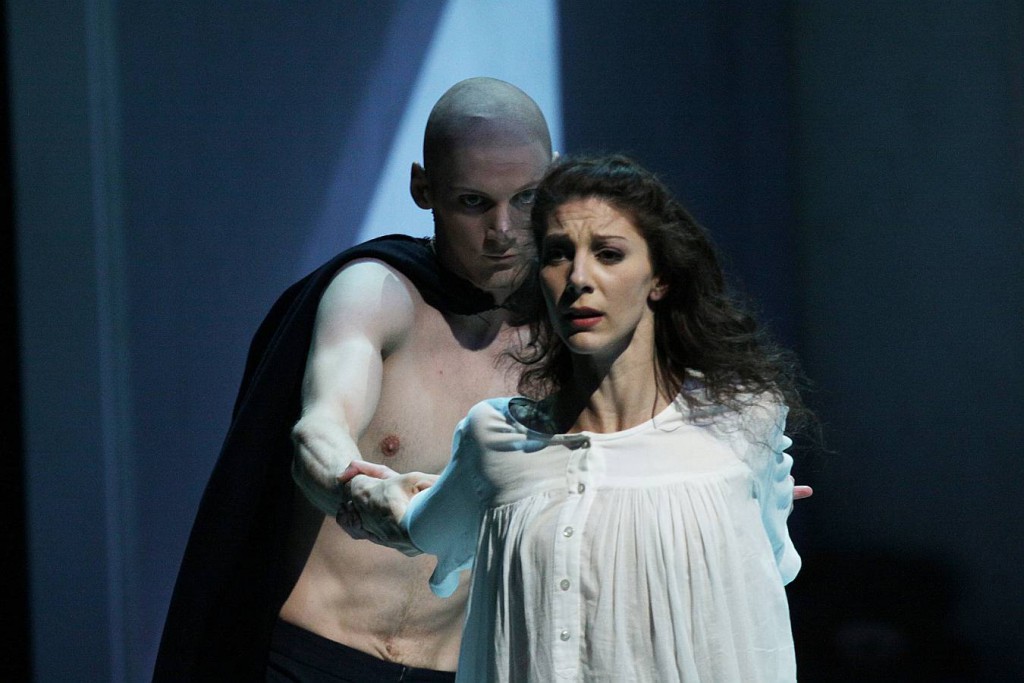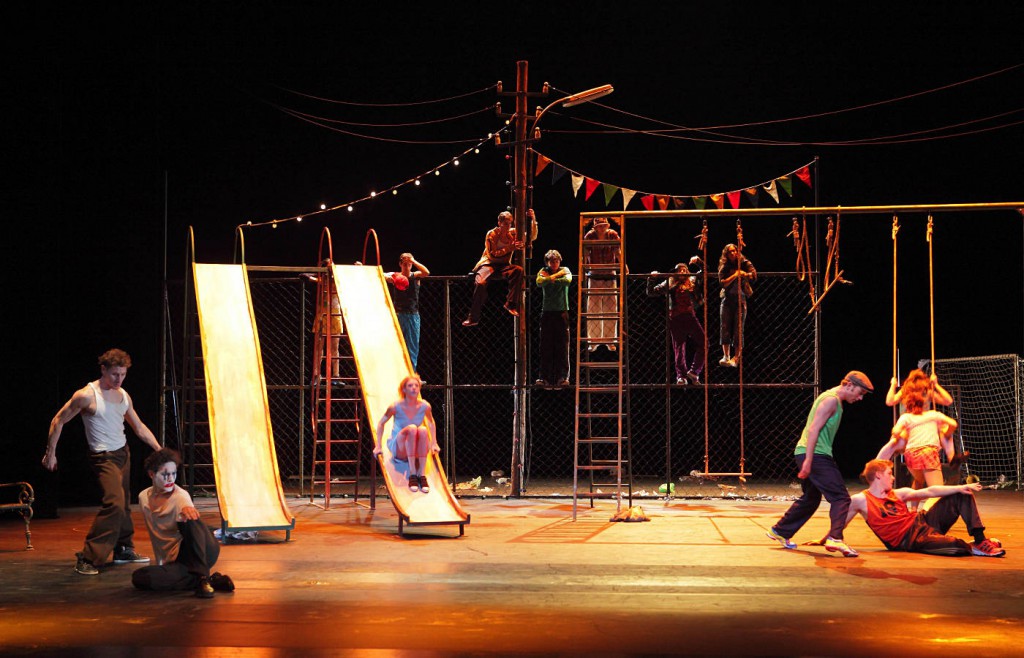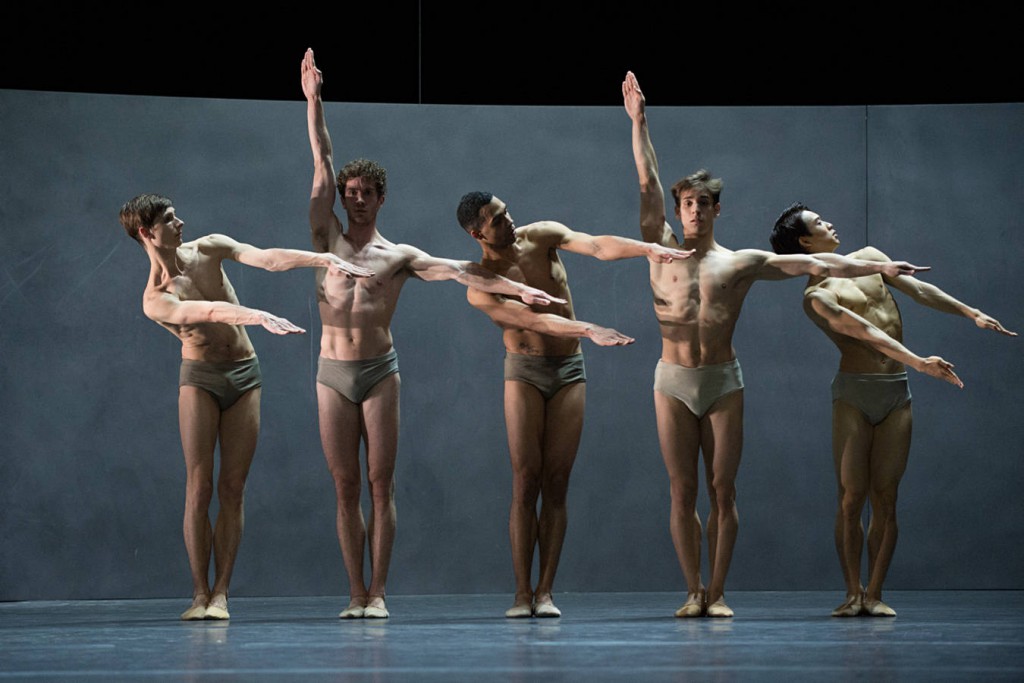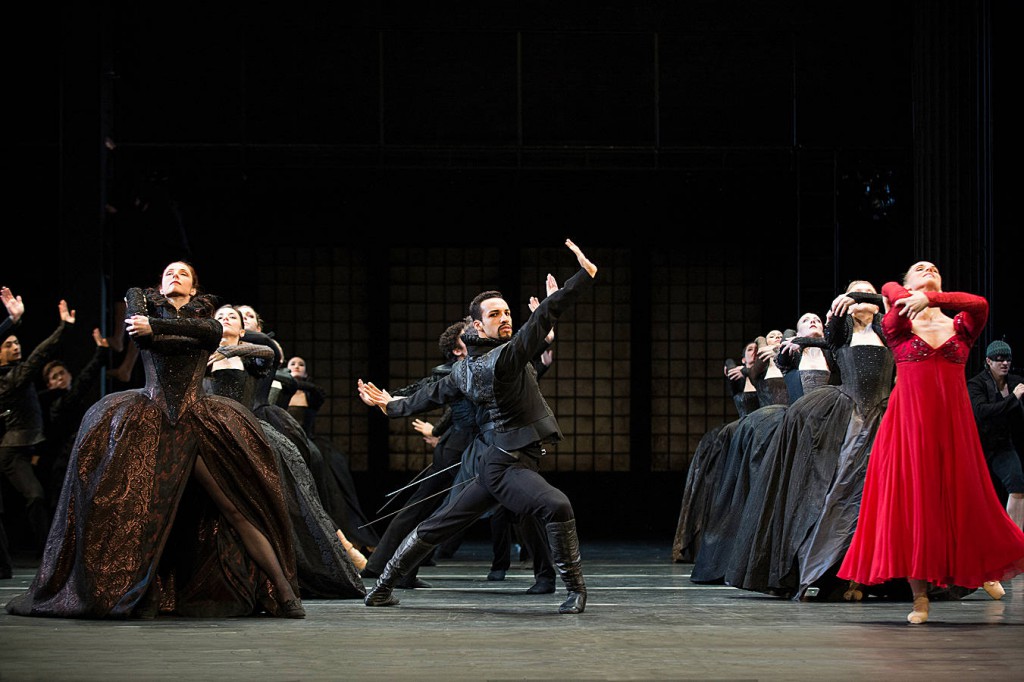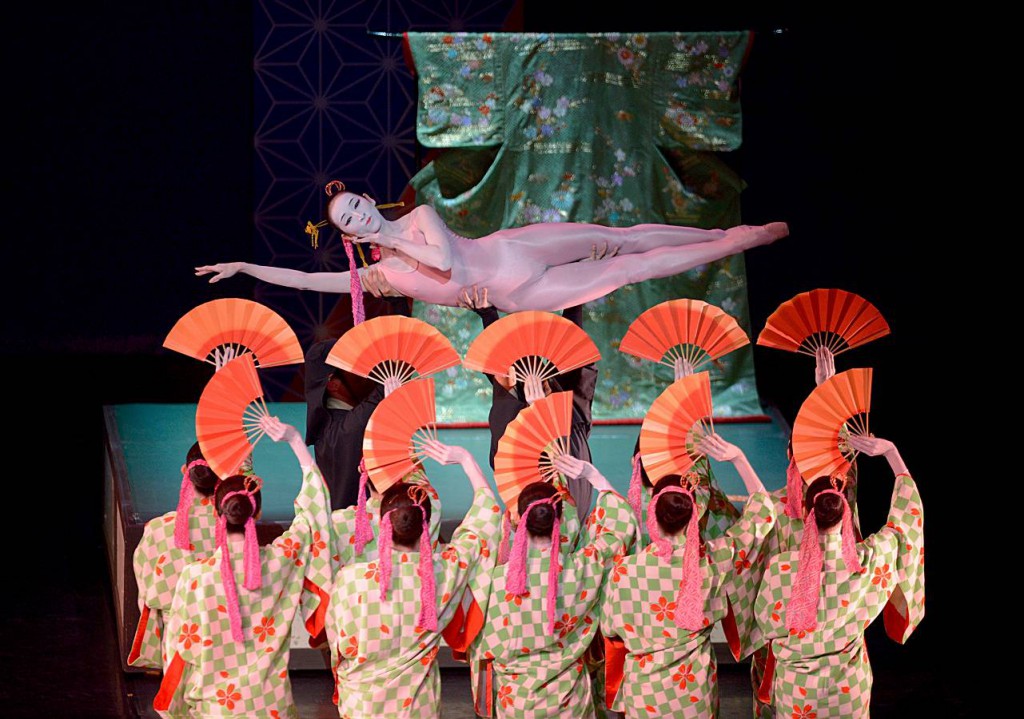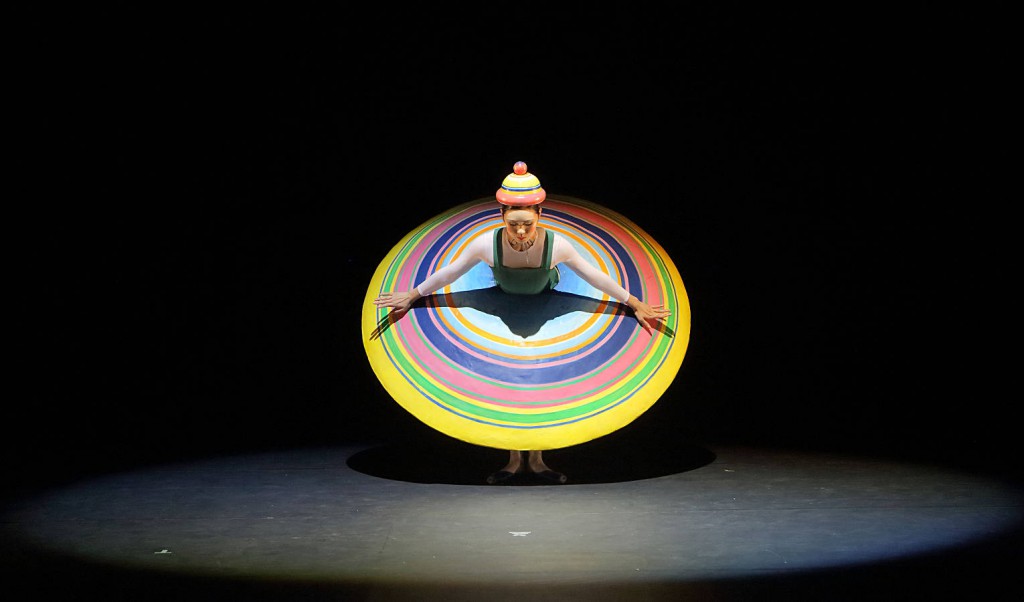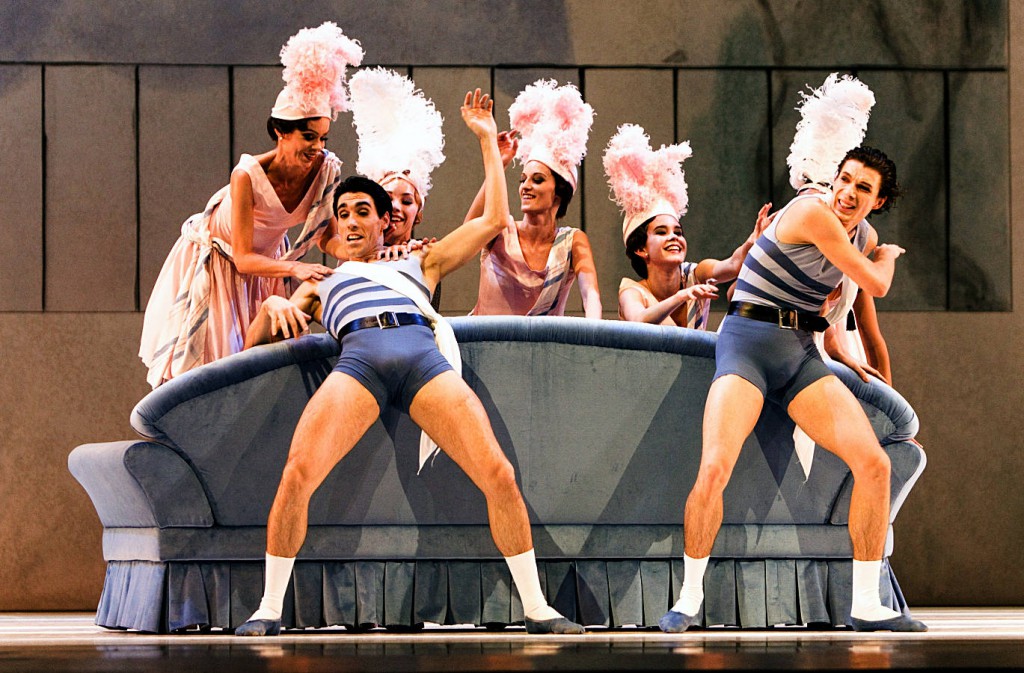Still in the Warming Phase
“Bella Figura”
Semperoper Ballet
Semperoper
Dresden, Germany
September 05, 2014
by Ilona Landgraf
Copyright © 2014 by Ilona Landgraf
 Semperoper Ballet Dresden heralded the new season with the triple bill “Bella Figura”, titled after Jiří Kylián’s eponymous “Bella Figura” and complemented by David Dawson’s “The Grey Area” and “Minus 16” by Ohad Naharin.
Semperoper Ballet Dresden heralded the new season with the triple bill “Bella Figura”, titled after Jiří Kylián’s eponymous “Bella Figura” and complemented by David Dawson’s “The Grey Area” and “Minus 16” by Ohad Naharin.
(The photos show a different cast of an earlier performance.)
Where is the borderline between art and artificiality? Between fantasy and reality? Truth and falsehood? Such are Kyliàn’s questions behind “Bella Figura”. Also: at which point does a performance actually start? “Bella Figura” has no formal beginning. While the auditorium fills, the dancers warm up. They wear practice clothing and repeat step combinations. When the lights dim, the curtain shuts. With the start of the music – a collage of various Baroque composers plus a Renaissance-based suite by the contemporary American composer Lukas Foss – two dancers are in the spotlight: a section of the curtain, as large as a door, is left open on the right. It leaves room for a man in skin-colored undershorts (Maximilian Genov). Lying on the floor with bent legs up in the air, he reminds of an insect that accidentally has fallen on its back. To the left, Jenni Schäferhoff, bare-breasted and likewise in skin-colored undies, is wrapped into the curtain’s folds by invisible arms from behind. Repeatedly she walks, gesticulating to the forestage but – perhaps confronted with something daunting – backs away and again seeks shelter in the curtain’s embrace. (more…)
